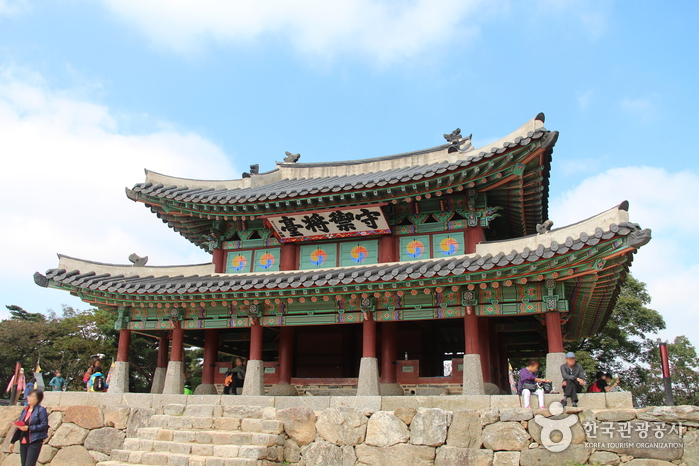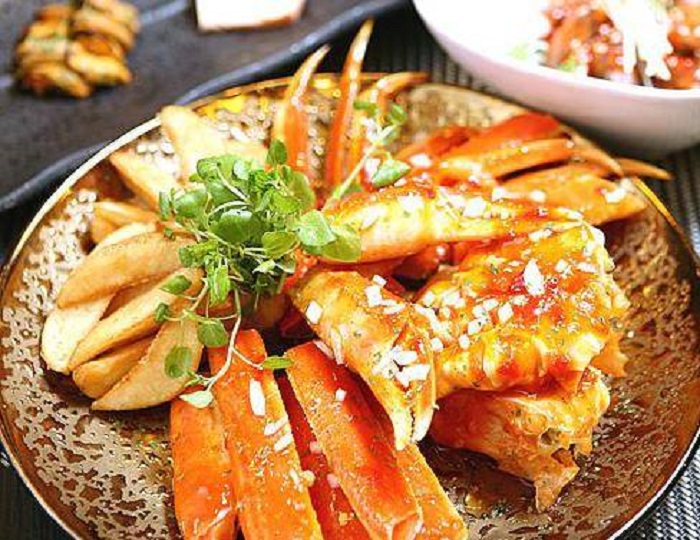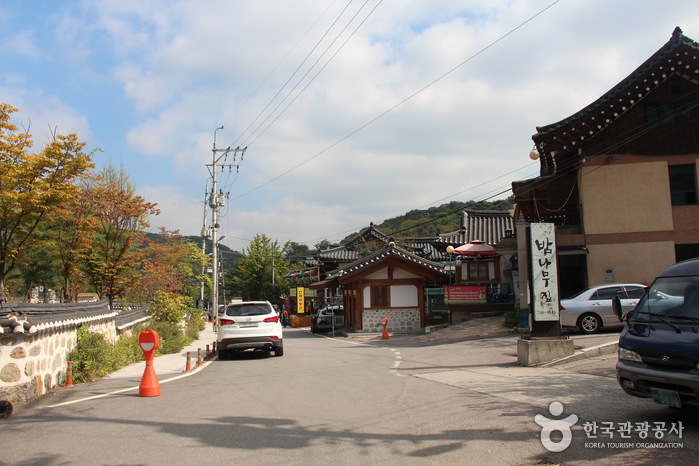It Michaa - MODA Outlet Guri Namyangju Branch [Tax Refund Shop] (잇미샤모다아울렛구리남양주)
10.3Km 2024-06-27
230, Gyeongchunbuk-ro, Guri-si, Gyeonggi-do
-
Renoma Golf - MODA Outlet Guri Namyangju Branch [Tax Refund Shop] (레노마골프모다아울렛구리남양주)
10.3Km 2024-06-27
230, Gyeongchunbuk-ro, Guri-si, Gyeonggi-do
-
Levi’s - MODA Outlet Guri Namyangju Branch [Tax Refund Shop] (리바이스모다아울렛구리남양주)
10.3Km 2024-06-26
230, Gyeongchunbuk-ro, Guri-si, Gyeonggi-do
-
Sueojangdae Post (수어장대)
10.3Km 2020-04-09
107-65, Namhansanseong-ro 780beon-gil, Gwangju-si, Gyeonggi-do
+82-31-760-4821
Sueojangdae Post (Defense Commander's Post) is a two-story military facility used as a lookout post as well as for directing battles. This structure was built on the western side of Namhansanseong Fortress as one of the four command posts. During the Manchu Invasion of 1636, King Injo personally commanded and encouraged the troops from here. They held out for 45 days against a Qing force of 120,000, before finally being forced to surrender and accept vassal status to the Manchu Empire.
Daegenara - Jamsil Branch (대게나라 잠실)
10.3Km 2021-03-27
165, Ogeum-ro, Songpa-gu, Seoul
+82-2-412-2338
It is a restaurant that specializes in strictly selected king crabs produced from the place of production. The best menu at this restaurant is snow Crab. This Korean dishes restaurant is located in Songpa-gu, Seoul.
Universal Arts Center (유니버설아트센터)
10.4Km 2024-03-19
664 Cheonho-daero, Gwangjin-gu, Seoul
Universal Arts Center, inaugurated in 1981, stands as a prominent venue for performances. Renowned for its splendid and classic architectural interior, it is celebrated for its distinctiveness. Its main facilities include the Grand Theater, the Luna Hall capable of accommodating up to 300 guests for banquets, and an audience lounge. It serves as a harmonious space where performance venues, artistic community, and art educational institutions converge. Here, visitors can enjoy a diverse array of performances ranging from ballet and musicals to concerts.
Olive Young - Gangbyeon Station Branch [Tax Refund Shop] (올리브영 강변역)
10.4Km 2024-04-17
10, Gangbyeonyeok-ro 4-gil, Gwangjin-gu, Seoul
-
E-Mart - Byeollae Branch [Tax Refund Shop] (이마트 별내)
10.4Km 2024-04-22
167, Sunhwagung-ro, Namyangju-si, Gyeonggi-do
-
Traditional Food Town around Namhansanseong Fortress (남한산성 전통음식마을)
10.5Km 2021-03-17
731, Namhansanseong-ro, Gwangju-si, Gyeonggi-do
+82-31-762-3010
The Traditional Food Town around Namhansanseong Fortress has many restaurants offering rice, dotorimuk (acorn jelly salad), tojongdak (whole chicken) dishes, and other traditional dishes. The area embraces almost 300 years of Korean history and the restaurants were built in traditional hanok-style buildings around Namhansanseong Fortress, a military stronghold from the Joseon dynasty.
![It Michaa - MODA Outlet Guri Namyangju Branch [Tax Refund Shop] (잇미샤모다아울렛구리남양주)](http://tong.visitkorea.or.kr/cms/resource/82/3314182_image2_1.jpg)
![Renoma Golf - MODA Outlet Guri Namyangju Branch [Tax Refund Shop] (레노마골프모다아울렛구리남양주)](http://tong.visitkorea.or.kr/cms/resource/62/3314262_image2_1.jpg)
![Levi’s - MODA Outlet Guri Namyangju Branch [Tax Refund Shop] (리바이스모다아울렛구리남양주)](http://tong.visitkorea.or.kr/cms/resource/37/3312937_image2_1.jpg)


![Olive Young - Gangbyeon Station Branch [Tax Refund Shop] (올리브영 강변역)](http://tong.visitkorea.or.kr/cms/resource/57/2878857_image2_1.jpg)
![Lordsystem [Tax Refund Shop] (주식회사 로드시스템)](http://tong.visitkorea.or.kr/cms/resource/15/2878915_image2_1.jpg)
![E-Mart - Byeollae Branch [Tax Refund Shop] (이마트 별내)](http://tong.visitkorea.or.kr/cms/resource/91/2888091_image2_1.jpg)

 English
English
 한국어
한국어 日本語
日本語 中文(简体)
中文(简体) Deutsch
Deutsch Français
Français Español
Español Русский
Русский